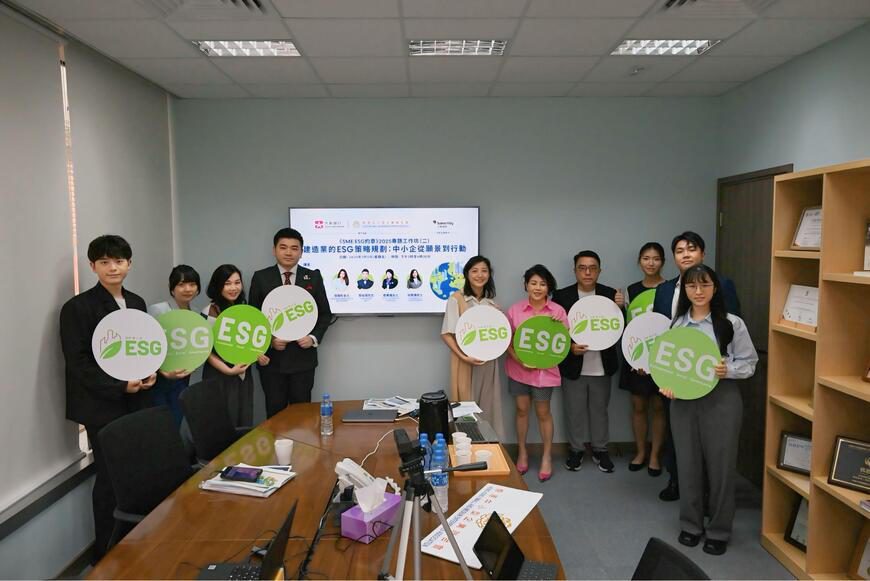
ESG is Increasingly Important

With a global trend in the pursuit of investments in sustainability especially in the midst of the COVID-19 pandemic, investors become to place a greater emphasis on Environmental, Social and Governance (“ESG”) issues. ESG is no longer merely a compliance issue, but it has been elevated to an important element embedded in the overall enterprise risk management mechanism and used as a tool for risk management. Against the backdrop of slower global economic growth, an integration of ESG factors into the companies’ business strategies is the key to prosperity.
Global ESG regulatory landscape has been evolving quite rapidly; for instance, the European Union has moved ahead with its taxonomy for sustainable finance and the United Kingdom also proposes to introduce a new disclosure rule to require premium listed issuers to align their climate change disclosures with the recommendations of the Task Force on Climate-related Financial Disclosures (“TCFD”). Locally, the ESG review conducted by Hong Kong Exchanges and Clearing Limited (“HKEX”) in 2018 revealed that Hong Kong listed issuers still fell short of the investors’ expectation in terms of ESG disclosures despite the fact that some progress had already been made, such as a lack of governance structure, the adoption of box-ticking approach, and incomplete disclosure, etc.
In view of the need for an enhanced ESG framework for HK listed issuers to keep up with its international counterparts, HKEX announced the new ESG reporting requirements in its Consultation Conclusions on Review of the ESG Reporting Guide and Related Listing Rules in December 2019. HKEX also updated the Guidance Letter HKEx-GL86-16, and, in this respect, the listing applicants are required to formulate mechanisms and policies in the area of ESG upon listing, effective from July 2020 onwards.
Board’s Role in ESG Governance Enhanced
Under the new ESG reporting requirements, it is now mandatory for the Board to include a statement containing a disclosure of its oversight of ESG issues, its ESG management approach and strategy, and how it reviews the progress made against ESG-related goals and targets. The Board should take leadership in enforcing materiality assessment, including stakeholder engagement, determine ESG issues that are most material to the business and prioritise relevant content in its ESG report accordingly.
It means that the Board needs to be accountable for the governance structure of ESG matters, (e.g. to establish an ESG committee), and the directors shall be equipped with the necessary knowledge and expertise in managing all risks, including ESG risks. Such amendment represents a shift away from mere reporting to actual management of ESG matters.
Disclosure of Significant Climate-related Issues
Another important amendment is the introduction of a new aspect, “A4: Climate Change”, under “Subject Area A. Environmental” of the ESG Reporting Guide published by HKEX. The new aspect requires the listed issuers to have policies on the identification and mitigation of significant climate-related issues that have impacted or may impact their business. Listed issuers are also required to describe such issues and actions taken to manage them.
This amendment has taken the recommendations of TCFD into account, with the highlights of two primary types of climate-related risks, physical risks and social, technological and political risks, that present financial risks to many sectors in which the listed issuers operate.
Reporting Principles and Boundaries
The new amendments also include an introduction of mandatory disclosure requirements so that listed issuers need to include an explanation of the application of the three reporting principles in the preparation of an ESG report, i.e. “materiality”, “quantitative”, and “consistency”. Listed issuers are also required to include an explanation of its reporting boundary to illustrate the process used to identify which entities or operations are included in the report.
Disclosure of Targets for Environmental Key Performance Indicators (“KPIs”)
Listed issuers are now required to set reduction targets for emissions (KPI A1.5), hazardous and non-hazardous wastes (KPI A1.6), energy usage (KPI A2.3) and water usage (KPI A2.4), and describe the steps taken to achieve them. The targets set need to be feasible and align with business plans and stakeholders’ expectations. In this respect, listed issuers are provided with the flexibility to express the targets in numerical figures or directional statements.
Other Key ESG Amendments
The other key amendments which apply to ESG reports prepared for financial years commencing on or after 1 July 2020 include the following:
- Modifying the Environmental KPIs, with disclosure of Greenhouse Gas emissions by scope types;
- Upgrading the disclosure obligation of all Social KPIs to “comply or explain” provisions;
- Revising the relevant Social KPIs for employment, health and safety, supply chain management, and anti-corruption;
- Shortening the deadline for publication of the ESG report; and
- Clarifying that a separate printed ESG report (other than the one combined with the annual report) is not required unless it is specifically requested by the shareholders.
Listed issuers are also encouraged to seek for independent assurance on their ESG reports. Where listed issuers opt to obtain independent assurance, which can cover all or part of the ESG report, the listed issuers should describe the level, scope and processes adopted for the assurance given in the report.
The way forward
To meet investors’ higher expectations and cope with more stringent ESG reporting requirements, listed issuers should embrace ESG into their long-term strategy in order to add value to their businesses. The Board needs to play a substantial role in ESG governance such as establishing an ESG committee, and aligning the expectations and requirements of both investors and regulators. To enhance both credibility of ESG information disclosed and quality of ESG reporting, listed issuers are encouraged to obtain external assurance for their ESG reports. Listing applicants should bear in mind that they also need to put in place necessary mechanisms and policies on ESG well in advance so as to comply with the regulatory requirements during the listing application process.
If you need any further information, please feel free to contact Doman Wong.










